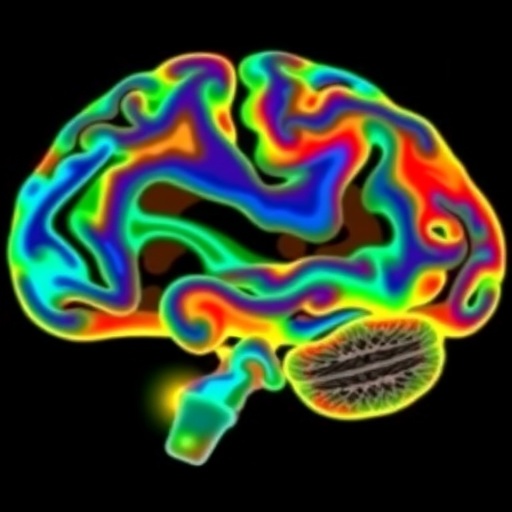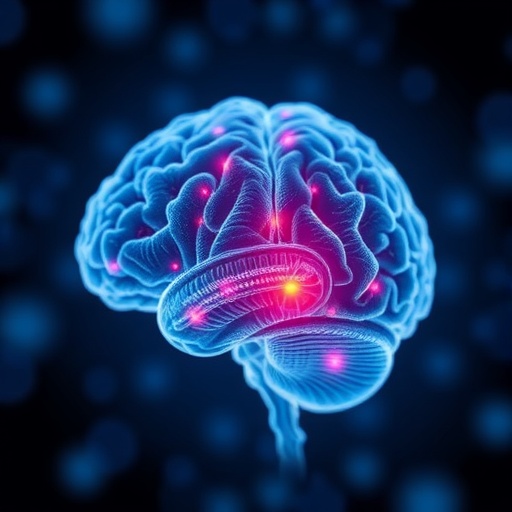In recent years, the quest to unravel the intricate biological underpinnings of Parkinson’s disease (PD) has led scientists to delve deeper into the molecular and cellular processes driving its progression. A groundbreaking study published in npj Parkinson’s Disease presents a novel integrative approach, combining neuroimaging with transcriptomic profiling to identify the molecular and cellular mechanisms underlying PD. By harnessing cutting-edge techniques to analyze spatial gene expression alongside brain imaging data, this study marks a significant leap forward in understanding the neurobiology of PD. These findings not only open new avenues for therapeutic intervention but also provide a more refined biological framework for interpreting PD pathology.
Parkinson’s disease is characterized by the progressive degeneration of dopaminergic neurons within the substantia nigra, yet the mechanisms initiating and sustaining this neurodegeneration have remained only partially understood. This new research employs neuroimaging modalities such as MRI and PET, fused with transcriptomic data capturing RNA expression across brain regions, to create an enriched map correlating structural and functional alterations with their molecular drivers. This dual-modal strategy enables researchers to identify specific gene expression signatures associated with regions exhibiting neurodegeneration or altered connectivity, thus pinpointing cellular players contributing to disease dynamics.
The study began by compiling high-resolution brain imaging data from a cohort of Parkinson’s patients alongside healthy controls. Advanced computational techniques were then used to spatially align these images with transcriptomic datasets derived from postmortem brain tissue samples. This alignment facilitated the identification of gene expression patterns correlated with imaging markers indicative of PD pathology. By integrating these data sources, the researchers were able to resolve the complex interplay between genetic activity and anatomical changes, honing in on pathways most relevant to PD progression.
One of the major breakthroughs of this approach was the discovery of distinct molecular signatures that correspond to vulnerable brain areas in Parkinson’s patients. For example, regions exhibiting atrophy or decreased connectivity showed upregulation of genes involved in neuroinflammation and immune responses. These findings corroborate the increasingly recognized role of neuroinflammation as a key mediator in PD pathophysiology. Moreover, the study highlighted altered expression of genes implicated in mitochondrial function and oxidative stress, two processes historically linked to dopaminergic neuron vulnerability.
Remarkably, the study also shed light on cell type-specific contributions to PD. By leveraging single-cell transcriptomic reference maps, the researchers could infer which cellular populations—such as neurons, astrocytes, microglia, or oligodendrocytes—were driving the observed molecular alterations. This analysis revealed that microglial activation and astrocytic responses are tightly coupled to regions of neurodegeneration, providing strong evidence for glial cells’ involvement not merely as bystanders but as active participants in disease pathology. Such insights underscore the growing consensus that PD is a disorder characterized by widespread cellular crosstalk and not just neuronal loss.
Beyond confirming known molecular players, the investigation uncovered novel genes and pathways previously unlinked to Parkinson’s disease. These included signaling cascades relevant to synaptic plasticity and axonal transport, indicating that disruptions in neuronal connectivity and intracellular trafficking may represent early events in PD pathogenesis. This discovery broadens the scope for potential treatment targets, as modulation of these pathways could conceivably halt or slow disease progression before significant cell death occurs.
The implications of this study extend into clinical practice as well. By mapping molecular and cellular changes onto brain networks, it becomes possible to develop biomarkers that accurately reflect disease stage and severity. Such biomarkers could revolutionize PD diagnosis, enabling earlier detection and more personalized therapeutic monitoring. For instance, integrating transcriptomic and imaging data might allow clinicians to predict which patients are at risk for rapid deterioration, thereby tailoring interventions more effectively.
Moreover, the approach highlights the potential utility of multimodal data fusion in neurodegenerative research beyond Parkinson’s disease. Similar frameworks could be applied to investigate Alzheimer’s disease, amyotrophic lateral sclerosis, and other disorders where complex interactions between genes, cells, and brain structure govern clinical outcomes. This integrative methodology promises to overcome limitations inherent in single-modality studies, offering a holistic perspective on disease biology.
Despite its promise, the study acknowledges challenges that remain in this emerging field. One notable limitation is the reliance on postmortem tissue for transcriptomic data, which may not fully capture dynamic changes occurring during life. Additionally, spatial resolution differences between imaging and transcriptomics necessitate sophisticated computational methods to ensure accurate data alignment. Nevertheless, ongoing advancements in single-cell RNA sequencing and in vivo molecular imaging techniques are poised to address these hurdles, making this integrative approach increasingly feasible and precise.
The research team also emphasized the need for larger, more diverse cohorts to validate and refine the molecular signatures identified. Parkinson’s disease exhibits considerable heterogeneity in its clinical presentation and progression, likely reflecting underlying biological diversity. Expanding studies to include a broader range of ethnicities, disease subtypes, and longitudinal sampling will be critical to advancing precision medicine in PD. Such efforts require collaborative consortia and data sharing frameworks to aggregate sufficient samples and enable robust analyses.
Another exciting avenue is the potential to link molecular signatures to genetic risk variants identified by genome-wide association studies (GWAS). By mapping risk alleles onto the spatial transcriptomic landscape, researchers can interpret how genetic susceptibilities translate into region-specific vulnerabilities and cellular dysfunctions. This integrative genetic-transcriptomic-imaging paradigm stands to significantly deepen our grasp of PD etiology and identify genetically informed therapeutic targets.
The neurobiological insights gained from this study also raise intriguing questions about the temporal sequence of pathogenic events in Parkinson’s disease. Understanding whether molecular changes precede imaging-detected alterations or vice versa is paramount for devising intervention strategies aimed at halting neuronal loss before symptoms become clinically apparent. Longitudinal multimodal investigations incorporating imaging and molecular markers will be essential to unravel this causality and chart disease trajectories accurately.
In summary, this pioneering research leverages the synergy of neuroimaging and transcriptomics to decode the complex molecular architecture underlying Parkinson’s disease. It reveals a tapestry of interlinked processes—from neuroinflammation and mitochondrial dysfunction to altered cell-type interactions—that collectively drive neurodegeneration. By illuminating these biological mechanisms, the study not only propels the basic science of PD forward but also lays a foundation for translational applications in diagnostics and therapeutics. The integration of multi-dimensional data heralds a new era in neurodegenerative disease research, where the convergence of disciplines promises breakthroughs in understanding and ultimately curing devastating conditions like Parkinson’s disease.
As research continues to evolve at the intersection of genomics and neurobiology, studies such as this exemplify the potential for transformative insights born from data integration. The era of holistic neurodegenerative disease investigation is well underway, promising a future in which molecular and cellular complexity is no longer an obstacle but a tool in unraveling human brain disorders. Scientists and clinicians alike eagerly anticipate how these integrative strategies will shape the landscape of Parkinson’s disease research and patient care in the years to come.
Subject of Research: Parkinson’s disease molecular and cellular mechanisms characterized through integrative neuroimaging and transcriptomic analyses.
Article Title: Neuroimaging transcriptomic analyses of Parkinson’s disease highlight molecular, cellular, and neurobiological mechanisms.
Article References:
Bledsoe, X., Betti, M.J. & Gamazon, E.R. Neuroimaging transcriptomic analyses of Parkinson’s disease highlight molecular, cellular, and neurobiological mechanisms. npj Parkinsons Dis. 11, 303 (2025). https://doi.org/10.1038/s41531-025-01149-y
Image Credits: AI Generated
Tags: cellular processes in Parkinson’s pathologydopaminergic neuron degenerationgene expression signatures in PDintegrative approach to Parkinson’s researchmolecular mechanisms of Parkinson’s diseaseMRI and PET in brain researchneurobiology of Parkinson’s diseaseneuroimaging techniques in Parkinson’s diseasespatial gene expression analysistherapeutic interventions for Parkinson’stranscriptomic profiling in neurodegenerationunderstanding Parkinson’s disease progression





